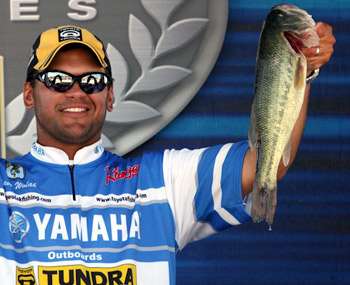
Sometimes it pays to have options during the course of a tournament. At least that has proven to be a valuable strategy for Elite Series pro Dave Wolak. While he's good enough to typically figure out the dominant pattern on any given waterway across the country, he knows that weather or fishing pressure can drastically alter a fishery over the course of a four-day tournament.
Accordingly, he always has a backup plan. "Your primary pattern is usually what you end up reading about," Wolak says. "You come to a place like Kentucky Lake and you read about ledge fishing and offshore fishing, and you know that the majority of the bigger fish are out there.
You know if you're going to make a name for yourself in the tournament, that's what you're going to be doing." Despite that understanding, he typically devotes about half a day of his limited practice time to finding a secondary pattern that will bail him out should something impact his primary bite.
"A secondary pattern is a backup plan that might produce an extra one or two fish in a crunch," he explains. "A lot of times that's what saves you. On your primary pattern, the fish might bite better in the morning or when they're running water.
You might have a certain time frame in which you can catch them. If you don't find something else to do during the non-peak periods, then it's time gone to waste." Even if his primary pattern focuses offshore, his secondary technique or areas will typically be close to the bank. It could be a patch of grass, a single boat dock, or anything where "you know it's going to take you about five minutes to get there, get five flips in there and maybe get a resident 3-pounder. "Sometimes it's as simple as a spot right next to the ramp to fish on your way back in," he added.
"My best advice is to go drive the bank and look for something that sticks out better than all the rest and might get you one or two more fish." The secondary pattern comes into play when your main spots don't produce a limit, or if you need a kicker fish, or if the weather prevents you from pursuing what you perceive to be a better bite.
It can also help with fish management — if you can relieve the pressure on your primary area or areas for one of the days of a multi-day event, it can help ensure that your fish don't fade away. "You might be able to run some of that stuff on a day when the wind is really blowing and make a day of it and then the next day go and do your primary pattern," Wolak says. "I did something similar to that in May at the Lake Murray Elite.
My primary pattern was fishing offshore with a swimbait to try to call up the bigger fish. I had several good days doing that. One day it was slick and calm, and I couldn't get a bite, but I had a set of boat docks where I knew I could go and catch about 10 pounds.
That's exactly what happened. I caught about 10 1/2 pounds and made it into the Top 12 cut." But for his secondary pattern, Wolak would have been driving home on Sunday instead of fishing for $100,000. "It's usually something simple," he suggests.
"You know you're not going to bring in the leading weight of the day doing it, but you're going to survive."
(Provided by Z3 Media)





